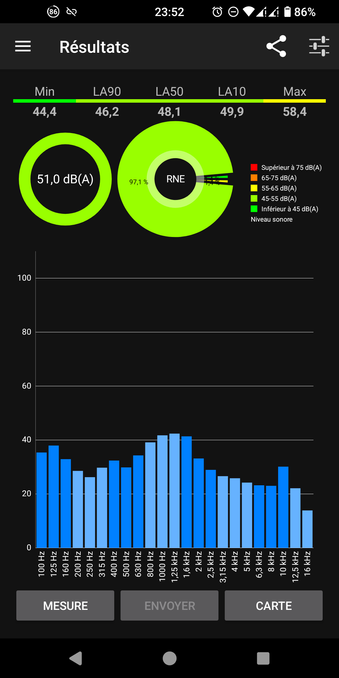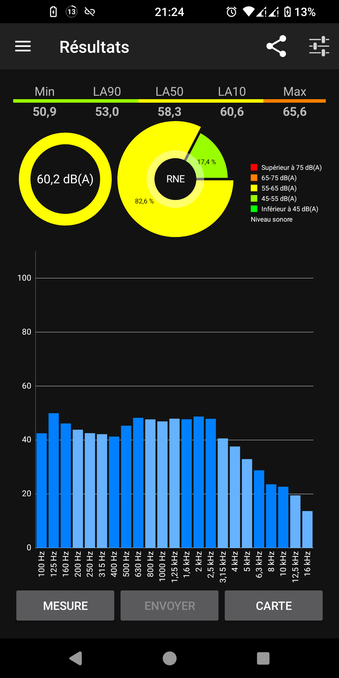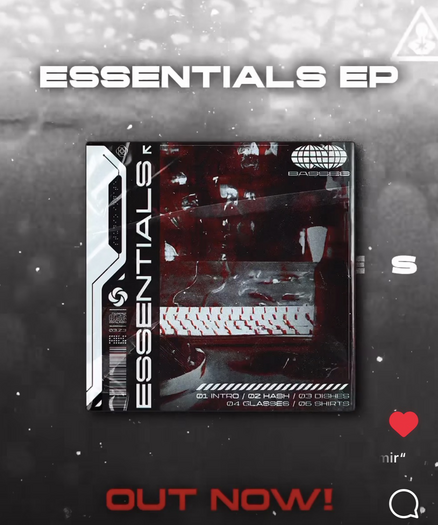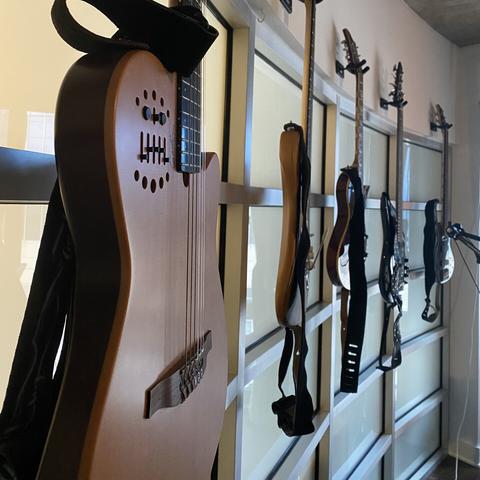The following is long but quite interesting.
Today, I asked about something that has intrigued me for awhile.
Me. "The opera singers I like are usually those who made the transition from acoustic to electric. I stop at the 1950's, when voice sound and quality began to change. But what I would like to understand is the transformation of the sound of opera brought about by Enrico Caruso. Aside from his vocal range, which was truly extraordinary, how did he change people's and singers' expectations of what an opera voice should sound like? How did his predecessor sound?"
Perplexity. "Enrico Caruso profoundly transformed the sound and expectations of opera singing in the early 20th century, largely due to his unique vocal qualities, interpretive style, and his embrace of recording technology.
Caruso's Influence on Opera Singing
1. Vocal Technique and Resonance:
• Caruso possessed extraordinary physiological attributes, including a resonant body that acted as a natural amplifier, allowing for a rich and powerful sound. He sang with correct physiological voice production, achieving a balance between technical precision and emotional expression
• His approach to recitative blurred the line between speech and melody, creating what critics described as "melodious talking," which brought a new clarity and emotional depth to operatic storytelling.
2. Modernisation of Vocal Style:
• Caruso represented a shift from the "old school" Italian vocal style, characterised by lighter and more ornamental singing, to a "modern" style that emphasised dramatic power and emotional immediacy. This is evident in comparisons with predecessors like Fernando De Lucia and Alessandro Bonci.
3. Repertoire Choices:
• He championed verismo operas (realistic operas) by composers like Puccini and Leoncavallo, which demanded more dramatic vocal expression. His performances in roles such as Canio in Pagliacci set new benchmarks for emotional intensity in opera.
4. Impact of Recordings:
• Caruso was one of the first opera singers to embrace recording technology, making over 250 records between 1902 and 1920. His recordings introduced opera to a global audience, standardising expectations for vocal quality and interpretation. His recording of "Vesti la giubba" became the first million-selling record
Comparison with Predecessors
Caruso's predecessors in the late 19th century adhered to the bel canto tradition, which prioritised vocal agility, purity of tone, and intricate ornamentation. Singers like Fernando De Lucia exemplified this style with lighter voices and a focus on elegance over dramatic power
In contrast, Caruso's voice was darker, richer, and more robust, aligning with the demands of verismo operas. His ability to combine technical mastery with raw emotional expression marked a departure from the more restrained performances of earlier tenors..
Me. It seems that I prefer the bel canto style, or at the very least, lighter voices. For instance, I find Beniamino Gigli to be overly dramatic. Richard Tauber, while he had a very powerful voice, was also controlled. I love Tito Schipa's voice and lightness, and the sweetness of John McCormac, and especially Leopold Simonau, even though he was a much later singer."
Perplexity. "Your preference for lighter voices and the bel canto style aligns with the hallmarks of this tradition, which emphasises beauty, agility, and emotional subtlety. Singers like Tito Schipa, John McCormack, and Leopold Simoneau embody many of these qualities, offering a contrast to the more dramatic styles of Beniamino Gigli or even Richard Tauber.
Characteristics of Bel Canto Singing
1. Vocal Agility:
• Bel canto singers are renowned for their ability to execute rapid and intricate passages with precision, clarity, and ease. This agility allows for fluid ornamentation, such as trills, runs, and cadenzas, which are essential in this style.
2. Lightness and Control:
• The bel canto approach favours a light tone in the higher registers and impeccable legato throughout the range. This creates a seamless flow of sound that prioritises beauty over sheer power.
3. Expressive Nuance:
• Emotional expression is achieved through subtle dynamics, phrasing, and rubato (flexible tempo). Singers focus on conveying the text's meaning with delicacy rather than dramatic force.
4. Orchestral Balance:
• The orchestration in bel canto operas is intentionally light to allow the voice to shine. Composers like Rossini, Bellini, and Donizetti wrote music that served as a vehicle for vocal virtuosity rather than overpowering it."
We then spoke briefly about singing during the late eighteenth and early nineteenth centuries.
Me. "Was there anyone recorded (or is there anyone today who sang as they did then? You mentioned Fernando De Lucia and Alessandro Bonci. Would they have followed this older style, or was there's different as well?"
Perplexity. "Fernando De Lucia and Alessandro Bonci, while closer to the older bel canto tradition than many of their contemporaries, did not fully replicate the singing styles of Mozart's time or the early 19th century. Both singers were active during the late 19th and early 20th centuries, a period when operatic singing was already transitioning toward more dramatic and less ornamented styles, influenced by verismo and the demands of larger opera houses.
Fernando De Lucia
• De Lucia (1860–1925) is often cited as one of the last tenors with ties to the bel canto tradition. He had a light, flexible voice and excelled in roles requiring agility and ornamentation. However, his recordings reveal a mix of bel canto elegance and some stylistic concessions to verismo, such as heightened emotional expression and dramatic phrasing. His interpretations are considered an important link to earlier styles but are not identical to what might have been heard in Mozart's or Rossini's time.
Alessandro Bonci
• Bonci (1870–1940) was another tenor associated with bel canto ideals. His voice was lighter than that of contemporaries like Caruso, and he adhered more closely to the refined, ornamented singing style typical of earlier periods. Bonci's recordings demonstrate a commitment to legato and agility, making him a closer approximation of older traditions than most singers of his era.
Revival and Modern Efforts
Today, there are efforts to revive older singing styles through historically informed performance practices:
1. Teatro Nuovo: This company specialises in bel canto opera using period instruments and historically informed techniques. Their singers are trained in long expressive lines, challenging coloratura, and improvisatory ornamentation, reflecting earlier traditions.
2. Specialised Singers: Modern artists like Lawrence Brownlee, Vivica Genaux, and John Osborn are celebrated for their ability to perform bel canto roles with agility and stylistic authenticity.
3. Baroque Specialists: While focused on earlier periods, singers in Baroque opera revivals also employ techniques such as improvisation and ornamentation that overlap with early bel canto practices."
Me. "Is Teatro Nuovo part of the historically informed movement? If not, who is? I am more familiar with it in classical music."
Perplexity. "Yes, Teatro Nuovo is part of the historically informed performance (HIP) movement. The company explicitly focuses on reviving bel canto operas with attention to period-specific vocal techniques, ornamentation, and the use of period instruments. Their approach involves studying historical treatises and performance practices to recreate the style of 19th-century Italian opera as authentically as possible. For instance, they employ a "primo violino et direttore" (first violinist and director) instead of a modern conductor, reflecting historical practices of ensemble leadership.
The "true purists" of bel canto singing—those who aim to replicate the exact techniques, styles, and interpretative practices of the 18th and early 19th centuries—are rare but do exist. These individuals or groups focus on historically informed performance (HIP) practices, often basing their work on early recordings, treatises, and other historical documentation.
Historical Recordings of Bel Canto Singers
Early sound recordings provide a window into the bel canto tradition as it was practiced in the late 19th and early 20th centuries. While not directly from Mozart’s or Rossini’s time, these recordings capture singers who were trained in methods closer to those older traditions:
• Adelina Patti (1843–1919): Patti was considered one of the last great sopranos of the true bel canto era. Her recordings, such as "Voi che sapete" from The Marriage of Figaro (1905), showcase her light, agile voice and ornamentation skills.
• Fernando De Lucia (1860–1925): Known for his ties to bel canto, De Lucia’s recordings reveal a mix of older ornamentation practices and an emerging verismo influence.
• Mattia Battistini (1856–1928): A baritone often referred to as "the last bel canto singer," Battistini’s recordings highlight his use of portamento, elegant phrasing, and dynamic control.
These singers represent a transitional period where elements of true bel canto were preserved but gradually gave way to more dramatic styles.
Modern Purists and Revivalists
1. Robert Toft: A leading figure in historically informed vocal performance, Toft has written extensively on bel canto practices and teaches singers to apply historical techniques such as improvised ornamentation and expressive declamation.
2. Teatro Nuovo: This company revives bel canto operas using period instruments and techniques. Their singers are trained in historical methods, including improvisation and flexible phrasing.
3. Sydney Conservatorium of Music: Researchers like Neal Peres Da Costa and Helen Mitchell are part of projects that emulate early recordings and experiment with historical vocal techniques to rediscover bel canto soundsMethodology of True Purists."
Me. I wonder if listening to bel canto basses and baritones would help me appreciate them more. I usually prefer tenors, not just because of their vocal range but because they tend to be lighter. I don't like loud, dramatic, heavy voices, even though I know some are definitely required. Likewise with suppranos. Many simply give me a headache with extremely high notes, and even in English, I sometimes have difficulty understanding them. That may not be true for bel canto singers."
Perplexity. "If you generally prefer lighter voices and find dramatic, heavy voices less appealing, exploring bel canto basses and baritones could indeed offer a new perspective. Bel canto basses and baritones often display a lighter, more agile vocal quality compared to the heavier, dramatic styles associated with later Romantic or verismo opera. Their focus on legato phrasing, ornamentation, and text clarity aligns with the principles of bel canto singing.
Characteristics of Bel Canto Basses and Baritones
1. Agility: Unlike the stentorian basses of later opera (e.g., Wagnerian roles), bel canto basses and baritones are required to execute intricate coloratura passages with precision.
2. Lightness of Tone: The emphasis is on beauty of sound rather than sheer power, allowing for a more lyrical and nuanced performance.
3. Expressive Nuance: Bel canto singers use tools like messa di voce (gradual swelling and diminishing of tone) and portamento (sliding between notes) to enhance emotional expression.
4. Text Clarity: Clear diction and rhetorical phrasing are essential, which might address your difficulty in understanding some sopranos.
Key Roles for Basses and Baritones in Bel Canto
• Basses: Roles such as Don Basilio (Il barbiere di Siviglia by Rossini) or Dr. Dulcamara (L'elisir d'amore by Donizetti) often require a combination of vocal agility and comedic timing.
• Baritones: Roles like Figaro (Il barbiere di Siviglia) or Belcore (L'elisir d'amore) showcase the lyrical and florid aspects of the baritone voice.
Singers to Explore
1. Past Singers:
• Luigi Lablache: A renowned 19th-century basso cantante who excelled in Rossini roles.
• Mattia Battistini: Known as the "King of Baritones," his recordings reflect bel canto elegance.
2. Modern Revivalists:
• Alessandro Corbelli: A master of comedic bel canto roles with a light, agile bass-baritone voice.
• Ildebrando D’Arcangelo: Noted for his performances as Don Giovanni and Leporello, blending lyricism with agility.
#baritones #basses #BelCanto #HistoricallyInformedPerformance #opera #singing #tenors #VocalStyles






